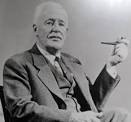| Date | Text | |
|---|---|---|
29 Oct 1885

Sidney R. Dight |
birth Sidney R. Dight Born 29 Oct 1885; died 2 Jan 1948 at age 62. Rear Admiral Sidney Rupert Dight was an English navy officer and engineer who originated the petroleum smoke screens used to confuse the pilots of German bombers. They were rapidly developed and used for protection of industrial targets from aerial bombardment during WW II. During the war, the majority of high-output boilers designed by the Admiralty were equipped with the circulation augmentor he invented. His navy career began as an Engineer Sub. Lieutenant on 4 Jul 1905, and he served a few years at sea, some in WW I. During the war, he was appointed, though briefly, as Assistant Secretary of the Board of Invention and Research. By the 1930s he was the Commanding Officer of the Admiralty’s Fuel Experimental Station. During WW II, in early 1940, he was appointed Director of Development in the Petroleum Warfare Department (Local Defence Division). |
|
29 Oct 1885

Alfred V. Kidder |
birth Alfred V. Kidder Born 29 Oct 1885; died 11 Jun 1963 at age 77. Alfred Vincent Kidder was an American archaeologist who was the foremost American archaeologist of the southwestern U.S. and Middle America of his day and the force behind the first comprehensive, systematic approach to North American archaeology. His excavations included Pecos in New Mexico and the Maya in Guatemala. In spite of his great efforts and diligence he was criticized for his lack of integrated conclusions drawn from his numerous reports from the field without any synthesis and interpretation of that data. In his time, archeology was still considered as “gentlemanly adventure” with the goal of adding “artifacts”to museums. Kidder emphasized archeology's need for the scientific “eye” was the development of fact collecting techniques and clear definitions. |